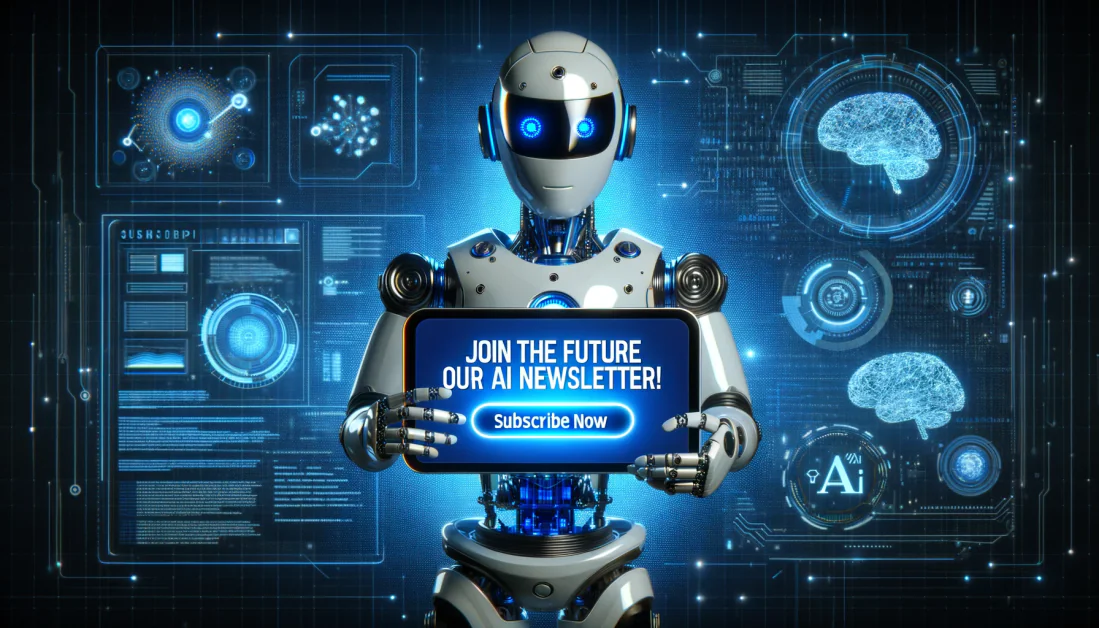The Future of Creativity and Automation: Generative AI Reshaping Industries
Picture a world where robots are creating symphonies, painting masterpieces, and writing novels. This exciting blend of creativity and automation, driven by Generative AI, is not just a fantasy anymore; it is reshaping our future in profound ways. The convergence of Generative AI and robotics is ushering in a new era with the potential to revolutionize industries from healthcare to entertainment, fundamentally changing how we engage with machines.
The Growing Interest in Generative AI and Robotics
The interest in this field is rapidly expanding. Universities, research labs, and tech giants are investing significant resources in Generative AI and robotics. This surge in research is accompanied by a substantial increase in investment. Moreover, venture capital firms recognize the transformative power of these technologies, leading to substantial funding for startups committed to turning theoretical advancements into practical applications.
Revolutionary Techniques and Advancements in Generative AI
Generative AI enhances human creativity by enabling the generation of realistic images, music compositions, and code. Key techniques in Generative AI include Generative Adversarial Networks (GANs) and Variational Autoencoders (VAEs). GANs, consisting of a generator and a discriminator, have revolutionized image synthesis and data augmentation, giving rise to innovative models like DALL-E, which generates images from textual descriptions.
On the other hand, VAEs are utilized in unsupervised learning, encoding input data into a lower-dimensional latent space for anomaly detection, denoising, and sample generation. Another notable advancement is CLIP, which excels in cross-modal learning by associating images and text to understand context and semantics across domains. These developments underscore the transformative potential of Generative AI in expanding the creative horizons and understanding of machines.
The Evolution and Impact of Robotics
The evolution and impact of robotics span decades, originating in 1961 with the introduction of Unimate, the first industrial robot that revolutionized manufacturing assembly lines. From rigid and single-purpose beginnings, robots have evolved into collaborative machines known as cobots. In the manufacturing sector, robots excel at tasks such as car assembly, packaging, and welding with unparalleled precision and speed, surpassing human capabilities in repetitive or intricate assembly processes.
Healthcare has witnessed significant advancements with surgical robots like the Da Vinci Surgical System enabling minimally invasive procedures with exceptional precision. These robots handle surgeries that would challenge human surgeons, reducing patient trauma and enhancing recovery times. Beyond the operating room, robots play a vital role in telemedicine, facilitating remote diagnostics and patient care to improve healthcare accessibility.
Service industries have also embraced robotics. For example, Amazon’s Prime Air delivery drones promise swift and efficient deliveries, navigating complex urban environments to ensure timely package deliveries. In healthcare, robots are transforming patient care, from assisting in surgeries to providing companionship for the elderly. Autonomous robots efficiently navigate warehouse shelves, reducing processing and shipping times to streamline logistics and enhance efficiency.
The Convergence of Generative AI and Robotics
The intersection of Generative AI and robotics is driving significant advancements in the capabilities and applications of robots, offering transformative potential across various domains.
One major advancement is sim-to-real transfer, where robots are extensively trained in simulated environments before being deployed in real-world settings. This approach allows for rapid and comprehensive training without the risks and costs associated with real-world testing. For instance, OpenAI’s Dactyl robot mastered manipulating a Rubik’s Cube entirely in simulation before successfully performing the task in reality, accelerating development cycles and ensuring improved performance under real-world conditions through extensive experimentation and iteration in a controlled environment.
Another critical enhancement facilitated by Generative AI is data augmentation, where generative models create synthetic training data to overcome challenges related to acquiring real-world data. This is particularly valuable when collecting diverse and sufficient real-world data is challenging, time-consuming, or costly. NVIDIA exemplifies this approach by using generative models to generate varied and realistic training datasets for autonomous vehicles, simulating different lighting conditions, angles, and object appearances to enrich the training process and enhance the robustness and adaptability of AI systems. These models ensure AI systems can adapt to various real-world scenarios by continuously generating new and diverse datasets, improving overall reliability and performance.
Practical Applications of Generative AI in Robotics
The practical applications of Generative AI in robotics exemplify the transformative potential of these combined technologies across various domains.
Enhancing robotic dexterity, navigation, and industrial efficiency are prime examples of this convergence. Google’s research on robotic grasping involved training robots with simulation-generated data to significantly enhance their ability to handle objects of diverse shapes, sizes, and textures, improving tasks like sorting and assembly.
Similarly, MIT’s Computer Science and Artificial Intelligence Laboratory (CSAIL) developed a system where drones utilize AI-generated synthetic data to navigate complex and dynamic spaces more effectively, increasing their reliability in real-world applications.
In industrial settings, BMW leverages AI to simulate and optimize assembly line layouts and operations, enhancing productivity, reducing downtime, and improving resource utilization. Robots equipped with these optimized strategies can adapt to production requirement changes, maintaining high efficiency and flexibility.
Ongoing Research and Future Prospects
Looking ahead, the impact of Generative AI and robotics is poised to be profound, with several key areas ready for significant advancements. Ongoing research in Reinforcement Learning (RL) is a critical area where robots learn from trial and error to enhance their performance. Through RL, robots can autonomously develop complex behaviors and adapt to new tasks, as demonstrated by DeepMind’s AlphaGo, which learned to play Go through RL. Researchers are continuously exploring ways to make RL more efficient and scalable, promising substantial improvements in robotic capabilities.
Another exciting research area is few-shot learning, enabling robots to quickly adapt to new tasks with minimal training data. OpenAI’s GPT-3 showcases few-shot learning by understanding and performing new tasks with only a few examples. Applying similar techniques to robotics could significantly reduce the time and data required to train robots for new tasks.
Hybrid models that combine generative and discriminative approaches are being developed to enhance the robustness and versatility of robotic systems. Generative models like GANs create realistic data samples, while discriminative models classify and interpret these samples. NVIDIA’s research on using GANs for realistic robot perception allows robots to better analyze and respond to their environments, improving their functionality in object detection and scene understanding tasks.
Looking further into the future, one critical area of focus is Explainable AI, aiming to make AI decisions transparent and understandable. This transparency is vital to building trust in AI systems and ensuring their responsible use. By providing clear explanations of decision-making processes, explainable AI can help address biases and errors, making AI more reliable and ethically sound.
Another essential aspect is developing effective human-robot collaboration. As robots become increasingly integrated into everyday life, designing systems that coexist and interact positively with humans is crucial. These efforts aim to ensure that robots can assist in various settings, from homes and workplaces to public spaces, enhancing productivity and quality of life.
Challenges and Ethical Considerations
The integration of Generative AI and robotics faces numerous challenges and ethical considerations. On the technical side, scalability poses a significant hurdle. Maintaining efficiency and reliability becomes challenging as these systems are deployed in increasingly complex and large-scale environments. Additionally, the data requirements for training these advanced models present a challenge. Balancing the quality and quantity of data is crucial, as high-quality data is essential for accurate and robust models. Gathering sufficient data to meet these standards can be resource-intensive and challenging.
Ethical concerns are equally critical for Generative AI and robotics. Bias in training data can result in biased outcomes, perpetuating existing biases and creating unfair advantages or disadvantages. Addressing these biases is imperative for developing equitable AI systems. Moreover, the potential for job displacement due to automation is a significant social issue. As robots and AI systems take over tasks traditionally performed by humans, it is crucial to consider the impact on the workforce and develop strategies to mitigate negative effects, such as retraining programs and creating new job opportunities.
The Path Forward
In conclusion, the convergence of Generative AI and robotics is reshaping industries and daily life, driving advancements in creative applications and industrial efficiency. While significant progress has been made, challenges in scalability, data requirements, and ethical considerations persist. Addressing these issues is crucial for developing equitable AI systems and fostering harmonious human-robot collaboration. As ongoing research continues to refine these technologies, the future holds even greater integration of AI and robotics, enriching our interaction with machines and expanding their potential across diverse fields.
Q: Will AI and robotics completely replace human workers in the future?
A: While AI and robotics have the potential to automate certain tasks, many experts believe that human workers will always be needed for creativity, empathy, and complex problem-solving.
Q: How will AI and robotics impact job security?
A: AI and robotics may disrupt certain industries and job roles, but they also have the potential to create new job opportunities in areas like engineering, data science, and programming.
Q: What are some ethical concerns surrounding the use of AI and robotics?
A: Ethical concerns include issues related to privacy, bias in algorithms, and the potential for job displacement. It is important to carefully consider these ethical implications when developing and implementing AI and robotic technologies.
Q: How can AI and robotics be used to benefit society?
A: AI and robotics have the potential to improve efficiency, safety, and convenience in various industries, such as healthcare, transportation, and manufacturing. They can also help address societal challenges like climate change and aging populations.
Q: Are we on the brink of a breakthrough in AI and robotics technology?
A: While significant advancements have been made in AI and robotics in recent years, experts believe that we are still in the early stages of realizing the full potential of these technologies. Continued research and development are necessary to achieve breakthroughs in areas like artificial general intelligence and autonomous systems.
Source link










